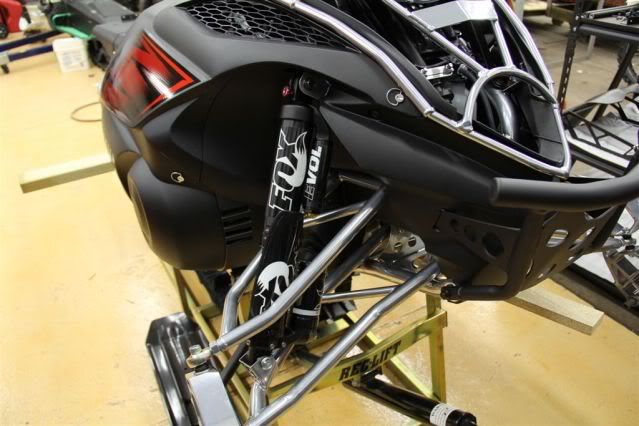OK, I am game to the methodical approach.
Care to outline that for the benefit of all the other members as well as me?
Sure, no problem.
To recap; everyone understands that you typically have an understanding that the main chamber controls sag and or ride height, up to the first 80% of travel. This measurement can be a rider preference, meaning some people will like sag and some will not.
The Evol chamber would control the last 1-2" of suspension travel.
To start with, you use what you have a recommended settings, or what you currently have found works ok for you.
Based on what you are trying to improve, the first part of travel, ( main chamber), or the bottom out, (Evol chamber), you make your adjustments.
Main chamber; start with 5 lb increments, keeping in mind that you will lose 1-2 psi of air when you disconnect, and up to 5 psi when you reconnect your pump. If you continue in this manner you should reach a threshold of rider comfort. Ex; Yamaha / you start with say 80psi main chamber/ increase by 5psi = better / increase by 5 more = better / increase by 5 more = better / increase by 5 more ride quality suffers. you now have a bracket to work from; 100psi was too much, but 95psi felt good. You should be able to find an ideal comfort zone in that range.
Evol chamber; duplicate the same scenario as the main chamber but do it in 10 psi increments.
A critical point to remember in all of this is, that by increasing main chamber you will have an effect on the Evol chamber finished pressure, so both must be checked while you are doing your testing. Like wise, an increase in Evol pressure will increase main chamber pressure.
Typically rebound adjustments (red, hand adjustable knob) are set in a neutral or middle setting; 22 overall adjustments = 11 as a starting point. For snocross type applications and or big drops you may want to increase rebound adjustment in 3-5 adjustments. Obviously adjusting out will give you faster rebound speed of the shock shaft. Some freestyle riders doing the great big drops do prefer faster rebound.
Compression adjustments
Lo speed; (small screwdriver adjustment) 22 overall adjustments, is for small stutter type bumps/ typically run these light or out as well unless you are doing snocross type riding.
High speed; (18 mm wrench), 22 overall adjustments, is for really big drops. This one needs to be run out as far as possible unless you are doing cornice and or serious rock drops only.
Do you need more in depth information then this?






